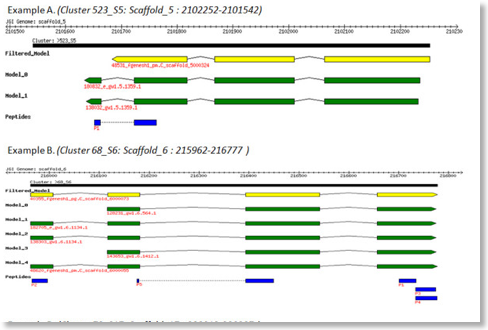Proteomics and genome annotation


Wright, J.C., Sugden, D., Francis-McIntyre, S., Riba-Gacia, I., Gaskell, S.J., Grigoriev, I V., Baker, S.E., Beynon, R.J. & Hubbard, S.J. (2009)Exploiting proteomic data for genome annotation and gene model validation in Aspergillus niger. BMC Genomics. 10, 61 [PUBMED][PDF]
BACKGROUND: Proteomic data is a potentially rich, but arguably unexploited, data source for genome annotation. Peptide identifications from tandem mass spectrometry provide prima facie evidence for gene predictions and can discriminate over a set of candidate gene models. Here we apply this to the recently sequenced Aspergillus niger fungal genome from the Joint Genome Institutes (JGI) and another predicted protein set from another A.niger sequence. Tandem mass spectra (MS/MS) were acquired from 1d gel electrophoresis bands and searched against all available gene models using Average Peptide Scoring (APS) and reverse database searching to produce confident identifications at an acceptable false discovery rate (FDR).
RESULTS: 405 identified peptide sequences were mapped to 214 different A.niger genomic loci to which 4093 predicted gene models clustered, 2872 of which contained the mapped peptides. Interestingly, 13 (6%) of these loci either had no preferred predicted gene model or the genome annotators' chosen "best" model for that genomic locus was not found to be the most parsimonious match to the identified peptides. The peptides identified also boosted confidence in predicted gene structures spanning 54 introns from different gene models.
CONCLUSION: This work highlights the potential of integrating experimental proteomics data into genomic annotation pipelines much as expressed sequence tag (EST) data has been. A comparison of the published genome from another strain of A.niger sequenced by DSM showed that a number of the gene models or proteins with proteomics evidence did not occur in both genomes, further highlighting the utility of the method.